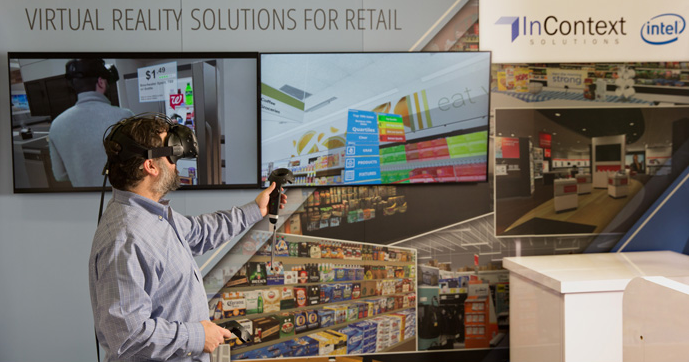The IoT market is huge and is growing by the day, and at this year’s National Retail Federation (NRF), Intel announced its Responsive Retail Platform, which brings together IoT and analytics in retail environment to help retailers get better insights about their stocks. It will also enable an easy shopping experience for customers.
Intel is confident in its new approach, as the tech giant plans to invest $100 million in its new platform over the next five years. Many startups, such as Maxerience, have already come up with solutions to help retailers ensure a more efficient supply chain while providing a seamless shopping experience for customers. Intel is reportedly collaborating with Honeywell, Avery, Dennison, SAP, and other companies to develop solutions for enterprises. These solutions may make use of various permutations of RFID, video, radio, and many different kinds of sensors.

The Intel RRP consists of three major components — a sensor array, gateways to process sensor data, and an open-source analytics platform on the cloud.
What's inside Intel’s Responsive Retail Platform
Sensor — Designed to function in highly dense environments, the Intel Responsive Retail Sensor is a multi-sensor device relying on RFID and sporting an antenna to communicate with each other and the gateway. Future iterations are said to include Wi-Fi, Bluetooth Low Energy, and video. The sensor is powered by an Intel Atom processor.
Gateway — All of the sensors talk to the gateway, which can either be based off of an Intel Core i7 or an Intel Xeon processor. Most of the sensor data can be processed at the gateway, and increasing the processing power of the gateway adds to the scalability factor.
Cloud — An open-source analytics PaaS is the last component of the Intel Responsive Retail Platform. Because it’s open-source, it’s not tied to any one vendor.
What retailers can look forward to
Technologies such as Intel’s Responsive Retail Platform will help shops figure out which items are low in stock or whether they are misplaced, for example. They can analyze which products their customers prefer based on external factors so that SKU counts can be adjusted. Retailers can also figure out which items are often sold out or are most commonly purchased in small quantities and can be moved close to the entry/exit areas.
What’s in it for you
Just by simply tying in a VR platform, you as a customer can shop from anywhere and have it ready for pick-up in time. Shops will be able to have fewer employees focusing on stock-keeping and instead have them focus on providing customer service.
Once stores are able to learn your habits, they’ll have stock of the things you need. Since shopping habits will tie in different categories of products, you’ll also find more matching products. This way, shopping will involve less moving around and more trying out products or services.
Source: digit.in
Advertisement
Learn more about Electronic Products Magazine





